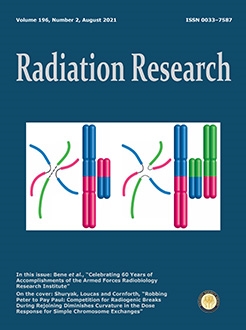The large majority of chromosome damage produced by ionizing radiations takes the form of exchange aberrations. For simple exchanges between two chromosomes, multi-fluor fluorescence in situ hybridization (mFISH) studies confirm that the dose response to X rays or gamma rays is quasilinear with dose. This result is in seeming conflict with generalized theories of radiation action that depend on the interaction of lesions as the source of curvature in dose-response relationships. A qualitative explanation for such “linearization” had been previously proposed but lacked quantitative support. The essence of this explanation is that during the rejoining of radiogenic chromosome breaks, competition for breaks (CFB) between different aberration types often results in formation of complex exchange aberrations at the expense of simple reciprocal exchange events. This process becomes more likely at high radiation doses, where the number of contemporaneous breaks is high and complex exchanges involving multiple breaks become possible. Here we provide mathematical support for this CFB concept under the assumption that the mean and variance for exchange complexity increase with radiation dose.
BioOne.org will be down briefly for maintenance on 17 December 2024 between 18:00-22:00 Pacific Time US. We apologize for any inconvenience.
How to translate text using browser tools
21 May 2021
Robbing Peter to Pay Paul: Competition for Radiogenic Breaks During Rejoining Diminishes Curvature in the Dose Response for Simple Chromosome Exchanges
Igor Shuryak,
Bradford D. Loucas,
Michael N. Cornforth
ACCESS THE FULL ARTICLE

Radiation Research
Vol. 196 • No. 2
August 2021
Vol. 196 • No. 2
August 2021




